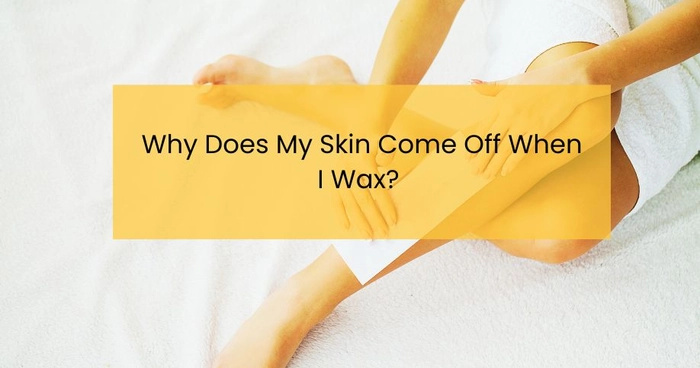Waxing is a popular method for removing unwanted hair, but sometimes it can take more than just hair with it. If you've ever experienced skin peeling or lifting after a waxing session, you're not alone. In this blog post, we'll explore the reasons why your skin might come off when you wax, and how you can prevent this from happening in the future.
Understanding Your Skin
Before diving into the reasons, it's essential to understand that our skin is made up of several layers. The outermost layer, known as the stratum corneum, is composed of dead skin cells that act as a protective barrier. Beneath this layer is the living tissue of the skin. Ideally, waxing should only remove hair and some of the dead skin cells, not the living layers beneath.
Reasons Why Skin Peels Off
1. Excessively Hot Wax
Using wax that is too hot can cause burns or skin lifting. Hot wax can damage the outer layer of the skin, leading to peeling or blistering. Always conduct a patch test on a small area to ensure the wax is at a safe temperature.
2. Inadequate Skin Preparation
Proper preparation is crucial to reducing the risk of skin damage during waxing. If the skin is not adequately cleaned or exfoliated before waxing, dead skin cells may not be removed evenly. This can cause the wax to grip more skin than necessary.
3. Sensitive Skin
Individuals with sensitive skin are more prone to issues during waxing. Sensitive skin is more reactive to the ingredients in wax and may peel or become irritated more easily than other skin types.
4. Improper Application and Removal Techniques
Using the wrong technique or removing the wax improperly can lead to skin problems. If wax is applied in the wrong direction or removed too slowly, it increases the likelihood of peeling or lifting the skin.
5. Use of Retinoids or Exfoliants
Certain skincare products containing retinoids, alpha-hydroxy acids (AHAs), or beta-hydroxy acids (BHAs) can make your skin more susceptible to peeling during waxing. These products cause the skin to renew at a faster rate, making it thinner and more prone to damage.
6. Wax Quality
The type of wax used can also be a factor. Low-quality waxes may not have the ideal composition for adhering solely to hair. Ensure you are using a reputable brand formulated for your skin type.
Prevention Tips
1. Test Patch
Always do a patch test before waxing, especially if you're using a product for the first time. This helps you gauge how your skin will react to the wax and its temperature.
2. Adjust Skincare Routine
Avoid using retinoids or exfoliants 48 hours before and after waxing. Allow your skin time to recover and adapt to the changes in routine.
3. Hydrate and Moisturize
Ensure your skin is well-hydrated and moisturized before waxing. This can help the wax adhere more to the hair and less to the skin. However, avoid oil-based moisturizers immediately before waxing as they can interfere with effectiveness.
4. Choose the Right Wax
Choose a wax suitable for your skin type and the area being waxed. Always opt for high-quality wax products designed for sensitive skin if necessary.
5. Professional Assistance
If you’re uncertain about DIY waxing, consider visiting a professional. They have the skills and experience to minimize the risk of skin damage.
Conclusion
Experiencing skin peeling after waxing can be uncomfortable and concerning. However, understanding the reasons behind it and taking preventive measures can improve your waxing experience significantly. Always prioritize skin health by selecting the right products and techniques for your skin type and needs. If issues persist, it may be beneficial to consult a dermatologist or skincare expert. Remember, beautiful smooth skin is achievable with the right care and precautions!

